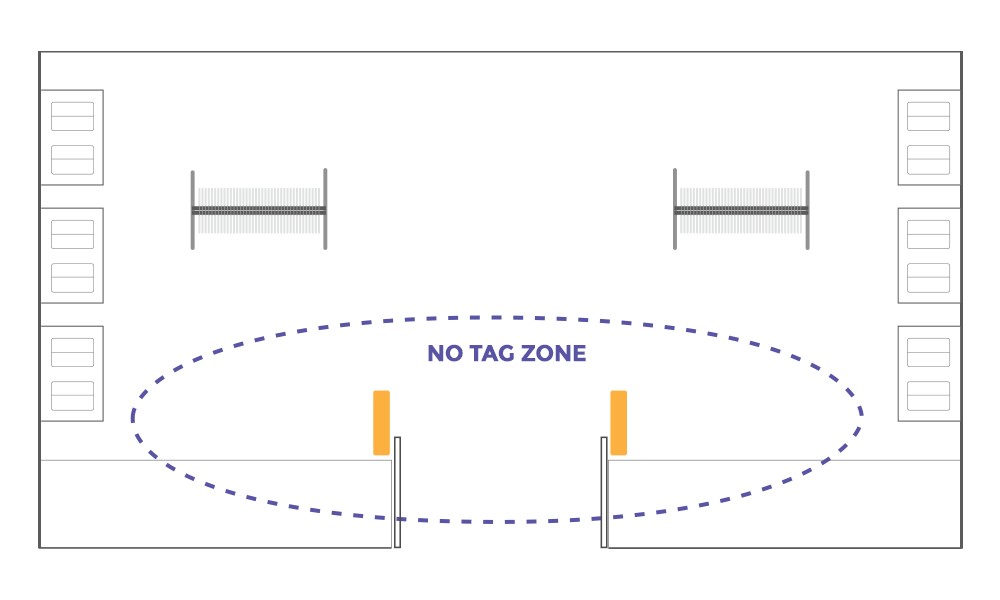
Training your staff in the use of EAS
Regardless of which Electronic Article Surveillance (EAS) system you employ or whether your retail outlet favors hard tags or security labels, your staff should be properly trained in the system’s use.
Staff training ensures your EAS system functions effectively, while consistently and reliably guarding your products against theft.
Here’s a quick guide to training your staff in the use of EAS.
Very little maintenance
Once installed, the antennas or pedestals associated with EAS systems require very little maintenance. When maintenance or a repair is required it should only be conducted by a qualified technician in accordance with the manufacturer’s instructions.
System checks
EAS system checks should be conducted daily at the time of store opening.
Generally, these checks take just a couple of seconds and involve ensuring the power outlet to the pedestal is switched on, and the relevant lights are illuminated to indicate the system is working.
False alarms
False alarms present one of the biggest threats to the effectiveness of any EAS system as they desensitise staff to potential thefts and also impact the customer experience.
Basically, every alarm that sounds in your store should mean a theft is occurring, and if it doesn’t, it’s critical to understand why.
There are a couple of very common, preventable reasons false alarms might be occurring, including:
- Failure to properly remove tags or deactivate labels
- Merchandise positioned too close to the antenna
- Improper EAS sensitivity levels
- Tag interference
- System malfunction (this is rare)
The “no tag” zone

One of the most important things staff should understand is that product positioning can affect your EAS.
Basically, every EAS system has a “no tag” zone. This area comprises 6ft around the EAS antennas and the space between them. This area should be kept free of product displays, clothing racks, LCD screens and even decorations. (Some decorations, especially those with foil or metal have been known to trigger an EAS alarm).
Deactivation and detaching
As part of daily system checks, staff should ensure all label deactivators are plugged into a power source and operating correctly. Meanwhile, all staff should be thoroughly trained on the removal of tags, and tag detachers should be made readily available at the Point of Sale.
Tag and label positioning
Label and tag positioning play an important role in how quickly and effectively a security label can be deactivated or how easy it is for staff to detach a security tag.
The ideal position for a security label is near the barcode, while ensuring the security label does not obscure it. This position allows for quick deactivation and maximum efficiency at the Point of Sale.
When it comes to security tags, they should be positioned so as not to interfere with the customer’s experience of an item yet be placed in a spot that’s easy for store associates to locate and access for tag removal.
Implementing a store guide that provides consistency in label and tag positioning can assist. Meanwhile, store management should ensure there are enough detachers and deactivators available at the Point/s or Sale.
Tag pollution
Tag pollution occurs when labels or tags are not properly deactivated or removed by other retailers.
Many advanced EAS antennas feature multi-coloured lights which allow staff to understand whether an alarm is sounding as someone enters or exits the store. This helps determine whether an alarm is sounding due to tag pollution or an actual theft.
Ensure staff are properly trained on identifying and handling tag pollution.
EAS sensitivity
When your EAS system is first installed, a technician will set its sensitivity. This sensitivity allows interference to be filtered out depending on your retail environment.
If false alarms are sounding, the sensitivity level may be a contributing factor. If you believe that’s the case, notify your EAS supplier so they can have a technician attend the store or even adjust it remotely over the internet.
Theft detection policy
Finally, all retail outlets should have guidelines for what staff need to do if they believe a theft is occurring or an EAS system is not working effectively.
These guidelines should incorporate tag and label positioning, EAS system contact details, maintenance schedules and more.
For more advice on using the right tags or labels to suit your retail environment, you can contact our friendly Security Tags staff here.


